For several years while my friend pastored a very small church in North Carolina, I made the Communion bread for their Communion services. This milk and honey bread is the first loaf I made for them. This is a lovely recipe, and you can’t get much more perfect than honey and milk as ingredients for a Communion service. It also happens to make an excellent sandwich loaf.
I have made several other breads for their quarterly Communion services, and most would be considered non-traditional. Different churches have different rules about what can be served at the Communion service. The only real restriction for Nadine’s church (Presbyterian) was that it shouldn’t be messy.
With that in mind, we always attempted to tie in the ingredients I used to make the bread with the scripture or the sermon to make their Communion service as meaningful as possible. For ease of browsing, you can find all my bread recipes in one place. Thanks for being here. Let’s get to it.
Pastry Chef Online Participates in Affiliate Programs. If you make a purchase through one of my links, I may earn a small commission. For more information click to read my disclosure policy
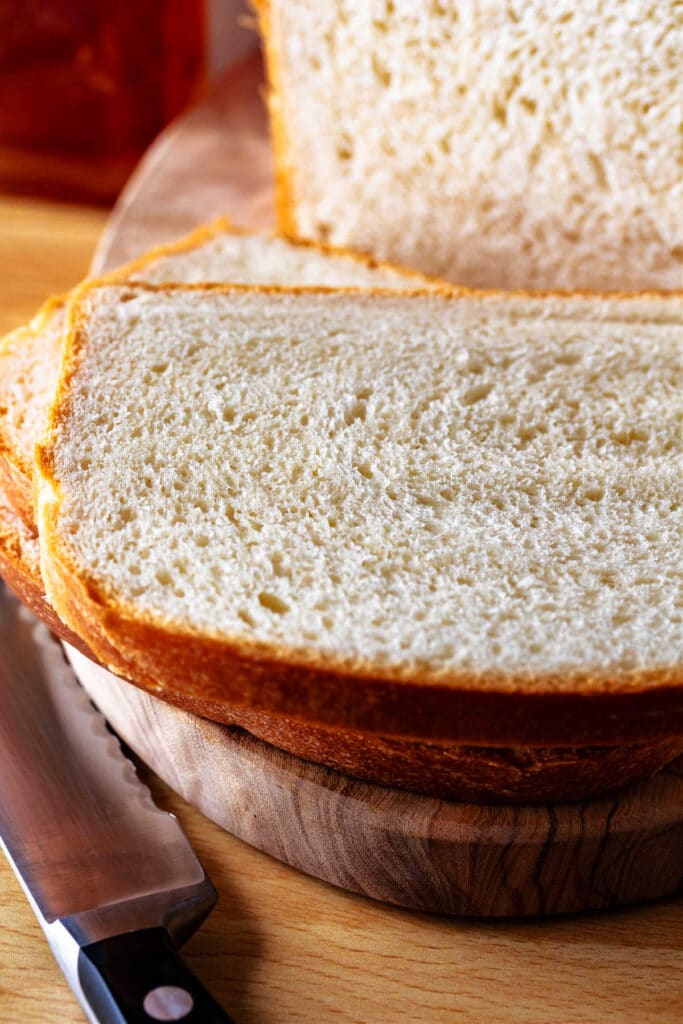
Milk and Honey Bread, At a Glance
✅Skill Level: Beginner/Intermediate
✅Skills: Making Dough, Kneading and Shaping, Proofing, and Baking
✅Type: Loaf Bread
✅Number of Ingredients: 6
✅Prep Time: 3 hours, 30 minutes including rise time
✅Cook Time: 35 minutes
✅Yield: 1 9×5 loaf
Jump Straight to the Recipe
I made this bread and loved it! I am making more today.
Reader Andrew
The House That Jack Built
I originally wrote this post patterned after the poem, The House that Jack Built.
I realize that it might not be a super helpful way to teach you how to make this loaf of bread, but I really do like the way the poem turned out.
If you’d like to skip it and get down to the nitty gritty of how to make this bread, please skip down to the recipe. If you need some more instruction for making bread, skip to the section “How to Make This Bread.”
For everyone else, here is the poem and the photos I took to go with it:
The Bread I Made for Communion
This is the bread I made for communion.
These are the hands that kneaded the bread that I made for communion.
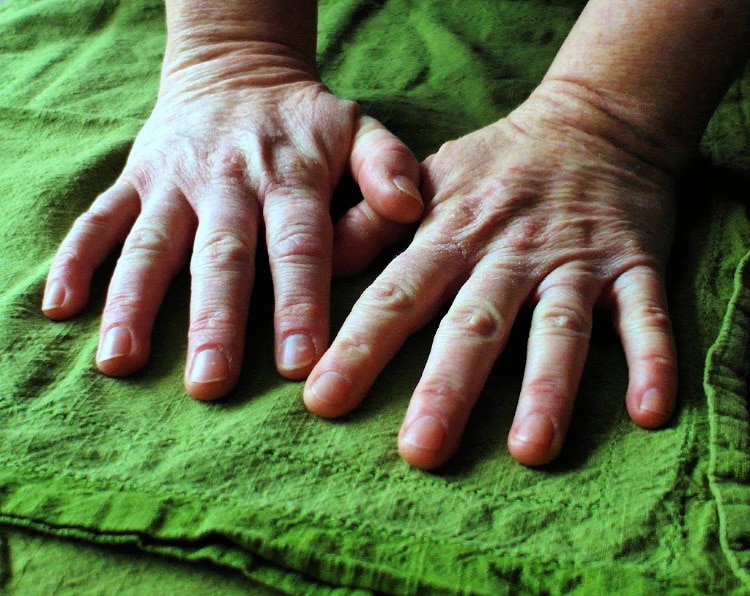
This is the yeast that raised the bread that I kneaded and made for communion.
This is the honey that wakened the yeast that raised the bread that I kneaded and made for communion.
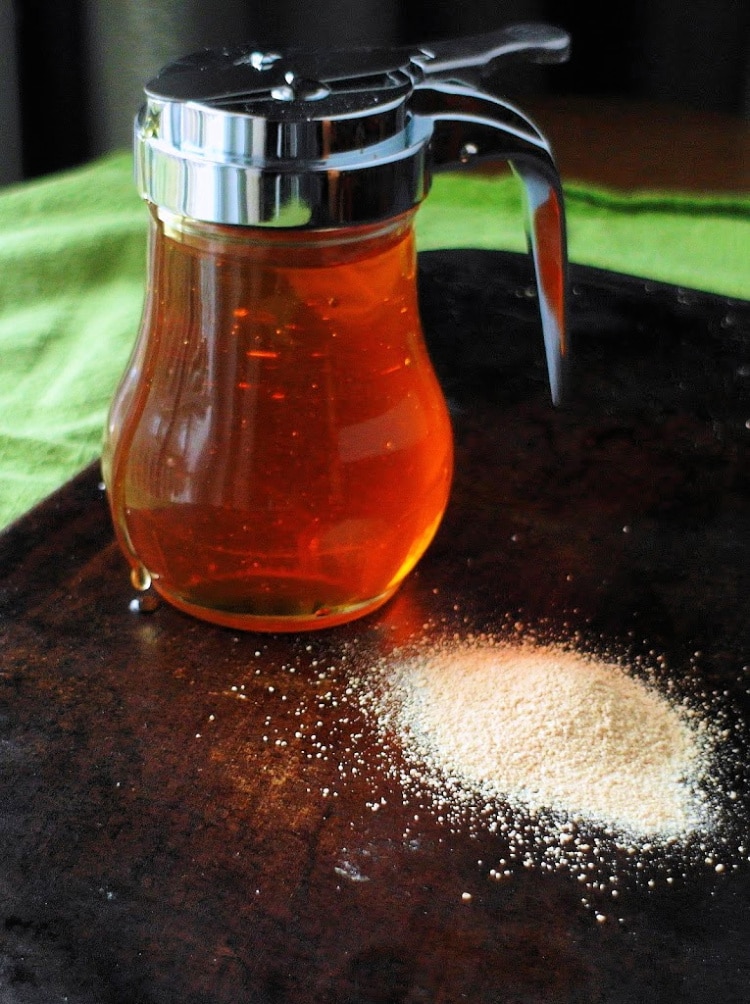
This is the milk that combined with the honey that wakened the yeast that raised the bread that I kneaded and made for communion.
This is the flour, all powdered and white that formed the gluten when combined with the milk that mixed with the honey that wakened the yeast that raised the bread that I kneaded and made for communion.
This is the oil, golden and pure that anointed the flour all powdered and white that formed the gluten when combined with the milk that mixed with the honey that wakened the yeast that raised the bread that I kneaded and made for communion.
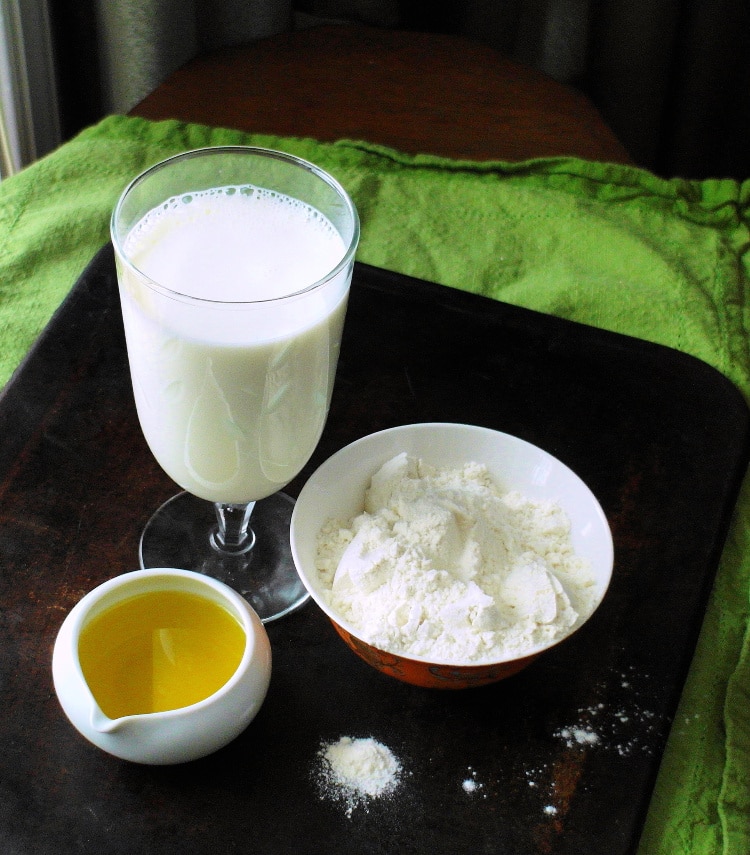
This is the salt, briny and sharp that seasoned the oil, golden and pure that anointed the flour all powdered and white that formed the gluten when combined with the milk that mixed with the honey that wakened the yeast that raised the bread that I kneaded and made for communion.
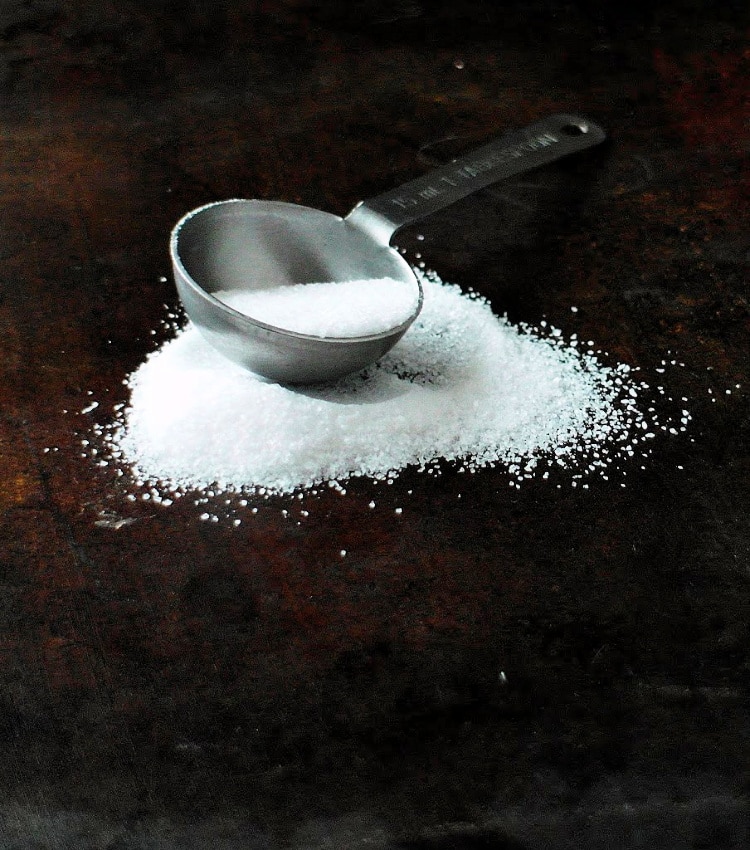
This is the stone, all seasoned and worn that supported the salt, briny and sharp that seasoned the oil, golden and pure that anointed the flour all powdered and white that formed the gluten when combined with the milk that mixed with the honey that wakened the yeast that raised the bread that I kneaded and made for communion.
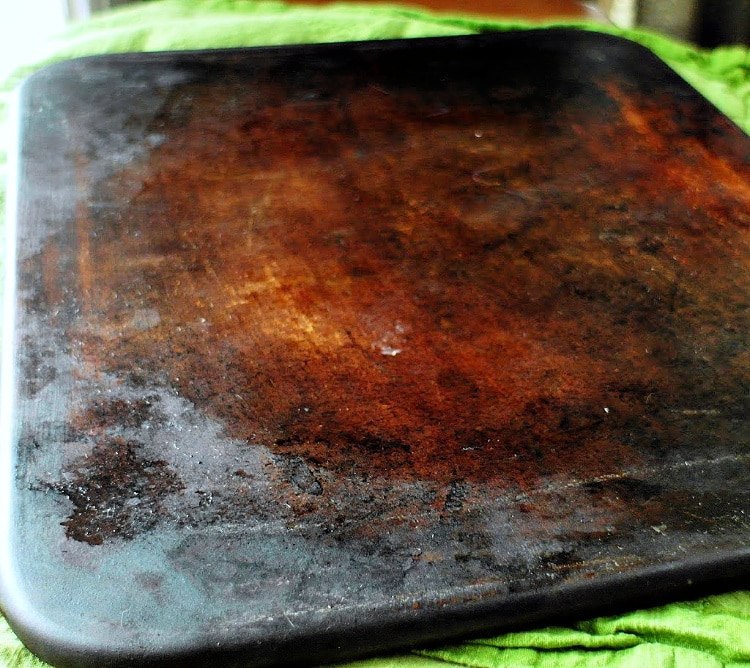
This is the oven, warm and waiting, that heated the stone all seasoned and worn that supported the salt, briny and sharp that seasoned the oil, golden and pure that anointed the flour all powdered and white that formed the gluten when combined with the milk that mixed with the honey that wakened the yeast that raised the bread that I kneaded and made for communion.
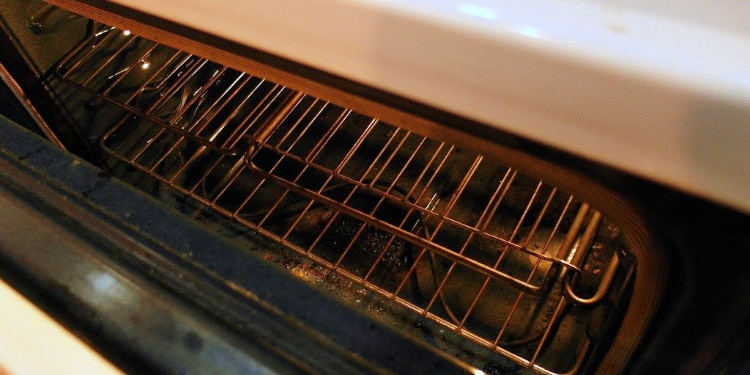
This is the church that receives the bread from the oven, warm and waiting that heated the stone all seasoned and worn that supported the salt, briny and sharp that seasoned the oil, golden and pure that anointed the flour all powdered and white that formed the gluten when combined with the milk that mixed with the honey that wakened the yeast that raised the bread that I kneaded and made for communion.
This is my friend whose flock is the church that receives the bread from the oven, warm and waiting that heated the stone all seasoned and worn that supported the salt, briny and sharp that seasoned the oil, golden and pure that anointed the flour all powdered and white that formed the gluten when combined with the milk that mixed with the honey that wakened the yeast that raised the bread that I kneaded and made for communion.

This is the bread that I made for communion.
Thank you for allowing me to keep my poem. This bread is special to me since it’s the first loaf I made for my friend’s Communion Services.
How to Make This Bread
Whether you’re making communion bread or a milk and honey sandwich loaf, this is a straightforward dough to make. Here are the ingredients you’ll need:
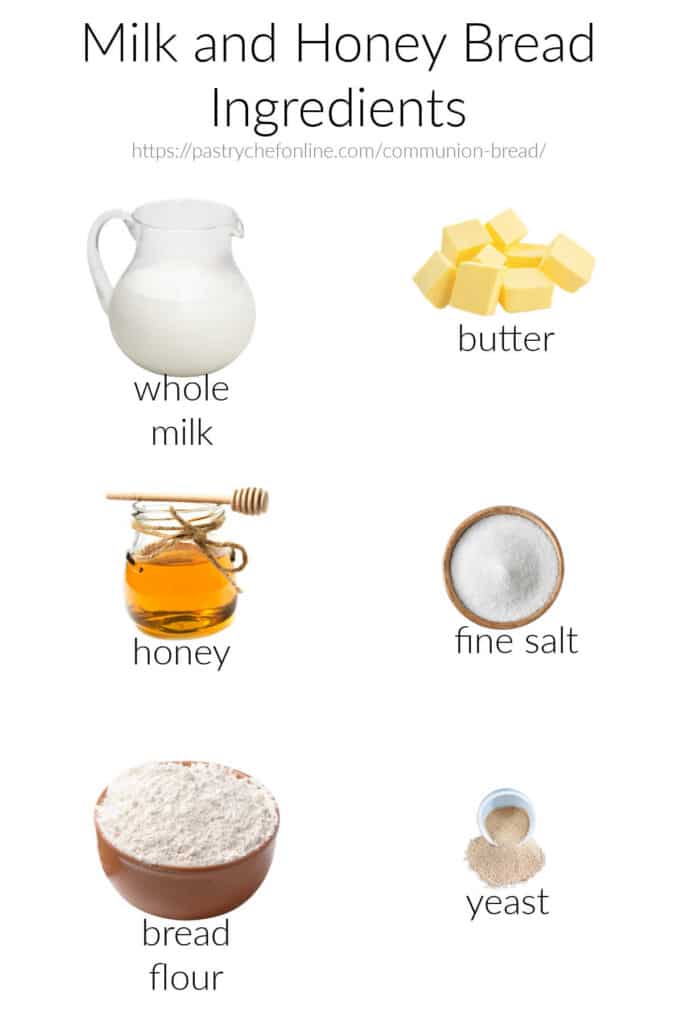
- whole milk: The water in the milk makes up almost all the liquid in the recipe, except for the small amount in the butter. Using milk instead of water adds a bit of tenderness as well as a lot of sweetness from the lactose in milk. Milk bread also toasts beautifully
- unsalted butter: Adds a touch of richness and helps to carry the flavor of the bread. You can increase the butter by quite a bit, up to 3 oz, if you want a richer bread. The resulting dough will be softer and a bit sticky. You can also substitute olive oil for the butter, if you prefer
- honey: Adds some mild sweetness to the bread as well as a beautiful perfume. This bread smells amazing while it’s baking
- fine sea salt: Keeps the bread from tasting flat as well as moderating yeast development so the bread doesn’t get overproofed and “flabby”
- bread flour: Provides the structure and the building blocks for gluten. Using bread flour ensures a nice, high rise and a robust gluten structure
- yeast: You can use instant yeast or active dry yeast. I wouldn’t bother with rapid rise yeast. The longer the fermentation period, the more flavor develops
The dough is made with a modified straight dough method.
Straight dough means you just dump everything in the mixing bowl at one time.
For this bread, you have to do a couple more steps, but it is still easy to make. Here’s the rundown:
- Scald the milk. Add the butter and honey.
- Stir in the salt.
- Dump in the flour, followed by the yeast.
- Mix and knead.
Pro Tip
Do not get stressed out about what temperature your milk should be.
If the milk (or other liquid) is too hot for you, it will be too hot for the yeast.
My rule of thumb for making a cozy environment for the yeast is that if the temperature is cozy for me, like the temp I’d like to take a shower in, then it will be cozy for the yeast.
If the milk (or other liquid) is too hot for you, it will be too hot for the yeast.
How to Serve This Bread for Communion
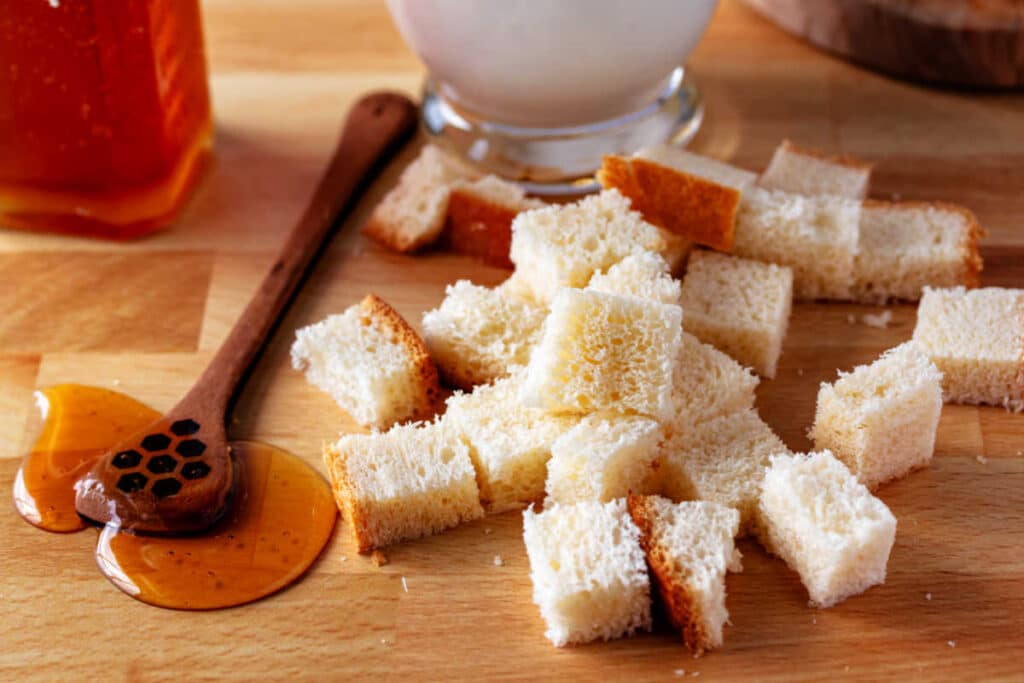
My friend cut it in small cubes, about 3/4″ square.
You could also cut thin slices, or if you’re passing it, you can allow people to pull off a small section.
In that case, cut the crust in a criss-cross pattern to give people a starting point for tearing off a piece.
Can I Bake This Bread For Sandwich Bread?
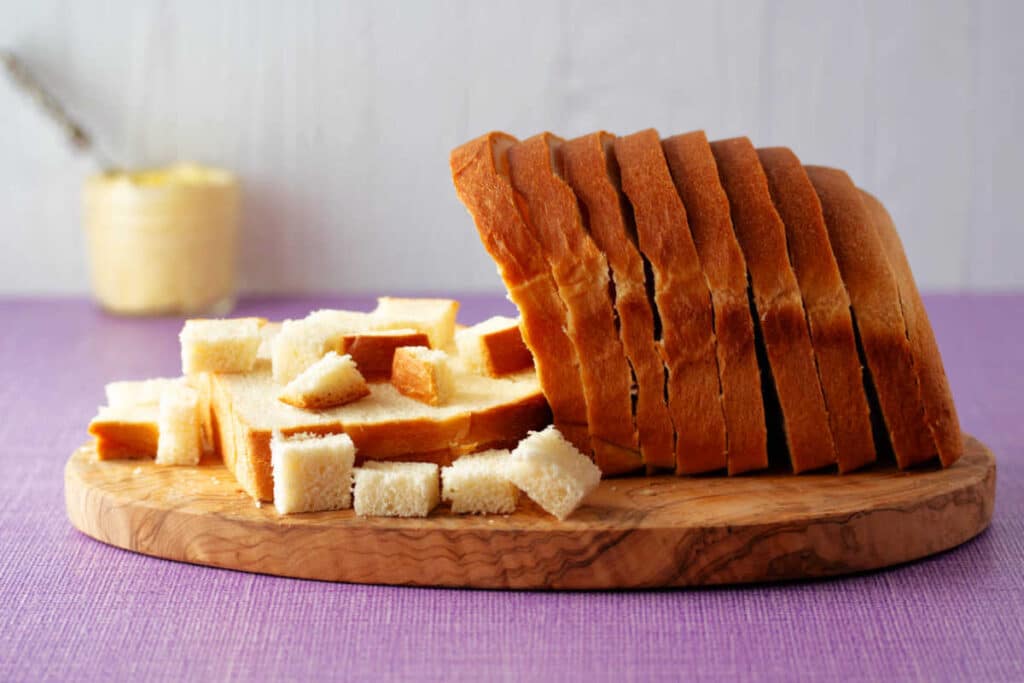
Absolutely. There is nothing overtly special about this bread that makes it acceptable only to serve for communion.
You can certainly bake the dough in loaf pans and have a wonderful, slightly sweet white sandwich bread.
Does This Bread Freeze Well?
Yes.
As with most breads, cool completely before freezing.
If using as sandwich bread, I recommend slicing the bread before freezing. That way you can just pull out the pieces you need rather than defrosting the whole loaf.
The bread should be fine, frozen in freezer bags or double wrapped in plastic wrap and foil for at least a month.
If you are going to serve this bread for communion, know that you can freeze it whole and then thaw it out completely on the counter still wrapped.
Once thawed, you can use a serrated knife to cut it into cubes for serving.
Using This Recipe for Sandwich Bread
Milk and honey bread makes delicious sandwich bread. While not quite as springy as my Tangzhong bread or as flavorsome as my potato bread, it’s a simple, mildly sweet bread that toasts beautifully.
It’s perfect for making cold sandwiches, but it also really shines in grilled cheese or cheese toast. Or regular toast.
See?
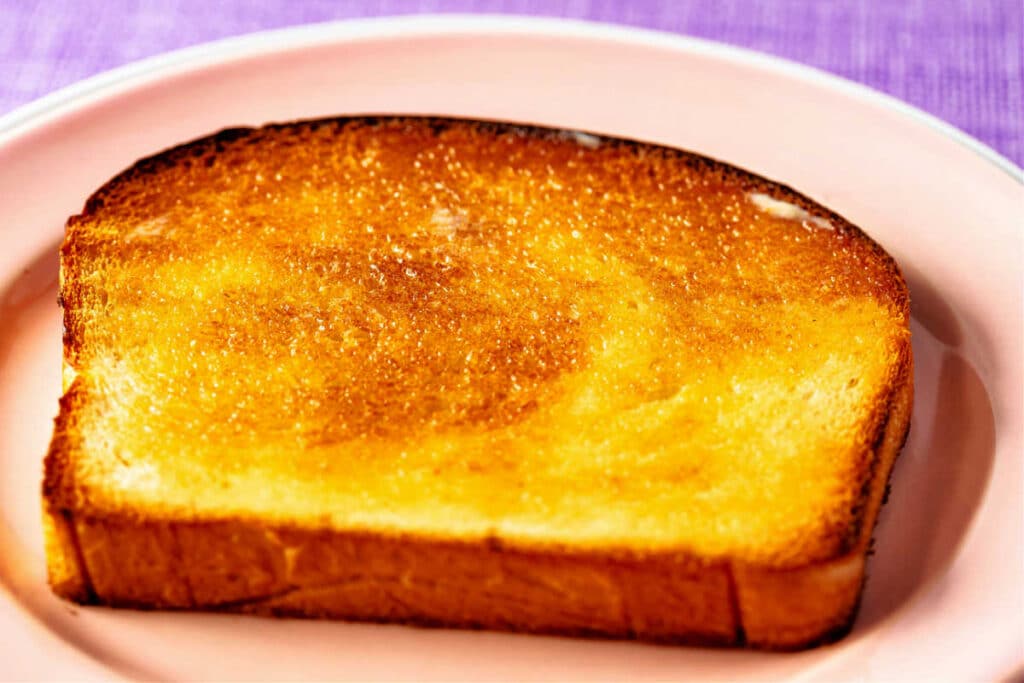
Other Recipes I Made for Communion
If you are interested in some of my other Communion bread recipes, you might want to look at Cornish Saffron Easter Bread, Champagne Yeast Pita, or for an unleavened bread, try Saffron Crackers with Citrus Fennel Sea Salt.
Questions?
If you have any questions about this post or recipe, I am happy to help.
Simply leave a comment here and I will get back to you soon. I also invite you to ask question in my Facebook group, Fearless Kitchen Fun.
If your question is more pressing, please feel free to email me. I should be back in touch ASAP, as long as I’m not asleep.
A Note About Measurements
My recipes are almost all written by weight, including liquids, unless otherwise specified.
For accuracy and consistency of results, I encourage you to buy–and use–a kitchen scale.
I promise that baking and cleanup will be so much quicker and easier.
This is the scale that I recommend for home use. I have owned and used one for years.
Don't let its small price and small size fool you. The Escali Primo is an accurate and easy-to-use food scale that I have used for years. It's easy to store, easy to use, has a tare function, and easily switches between grams and ounces/pounds for accurate measurements.
Please Take a Moment to Rate and Review
It will help me and other readers so much if you take a moment to rate and leave a review for this recipe.
You can use the stars to rate 1-5 (5 is best), and leave a review in the comments. It helps me make adjustments if any are needed, and comments help others decide whether the recipe is worth making.
Other ways to share include pinning, and/or sharing on your favorite social media platform.
Thank you so much for taking the time!

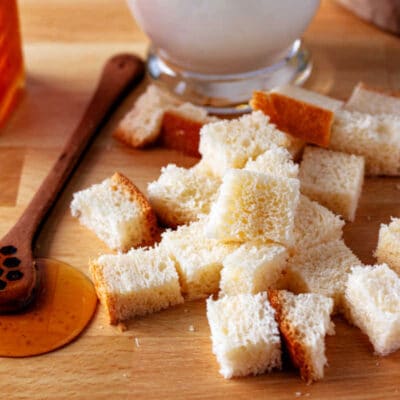
Milk and Honey Bread
Equipment
Ingredients
- 10 oz whole milk 284 grams or 1 14 cups
- 1 oz unsalted butter 28-29 grams or 2 Tablespoons
- 1 teaspoon yeast, active dry or instant 5 grams
- 16 oz bread flour 454 grams or about 3 1/2-4 cups
- 2 oz honey 57 grams or 3 Tablespoons
- 1 ¼ teaspoons fine sea salt 7 grams
Instructions
- Heat the milk until it's steaming and beginning to bubble around the edges. Remove from the heat, and whisk in the butter and honey until the butter has all melted and the milk is warm and not hot.
- Pour the milk mixture into the bowl of your stand mixer, and whisk in the salt.
- Pour in all the flour followed by the yeast.
- Fit the mixer with the dough hook and bring the dough together on low speed.
- Increase the speed to medium and knead for 8-10 minutes (you can also do this by hand. It will take about 10-15 minutes.) When ready, the dough will be very supple and extensible and not at all sticky. This is a fairly firm dough. No dough should stick in the bottom or sides of the bowl after kneading.
- Gather the dough into a nice round and put back in the mixer bowl. Brush on olive oil to thinly cover the exposed dough. Cover and let rise in a warm place until double in size, about two hours.
- Press the gases out of the dough. For one 9"x5" loaf of bread, press the dough into a rectangle and then roll it up and fit it into the pan. To make a round loaf, shape into a round, making sure to create some tension on the outside of the dough ball by rolling it between your palms on a clean countertop.
- Cover and let rise until almost doubled again, about an hour. If baking a round, slice an X into the top with a sharp knife.
- Bake at 350F for about 30-35 minutes, until deeply golden brown and the internal temperature of the bread reaches 200F. If making loaf bread, brush the crust with a little melted butter as soon as it comes out of the oven.
- Let cool on racks completely before slicing.
Did You Make Any Changes?
Notes
To Make a Double Batch
- 20 oz whole milk
- 2 oz unsalted butter
- 2 teaspoons yeast (active dry or instant)
- 32 oz bread flour
- 4 oz honey (1/3 cup)
- 2 1/2 teaspoons fine salt
Other Ways to Form the Dough
Rather than forming loaves or a round, you can also make great hamburger buns out of this dough. Scale them at 4 ounces or so. This would also make a lovely braided loaf, so don’t limit yourself. Simple divide the dough into thirds after the first rise, braid, and tuck the ends under, and then give it its second rise. Nutritionals are based on slicing the loaf into 12 slices. If you portion the dough differently or slice the bread more thinly, the nutritional information will vary.Nutrition
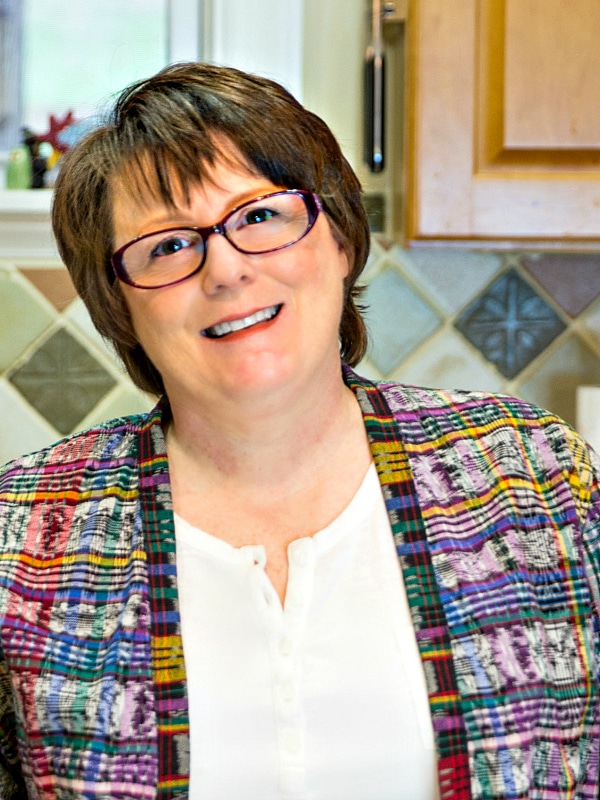
Hi, y’all! I hope you’ve enjoyed this post and hopefully also learned a thing or two.
If you like my style, I invite you to sign up for my occasional newsletter, The Inbox Pastry Chef.
Expect updates on new and tasty recipes as well as a bit of behind-the-scenes action. I hope to see you there!
Fun Fact: I found that bread recipe through a search for Milk and Honey Bread, and lo and behold, it is the lovely Kristen Wogan Doyle’s recipe. She wrote it in her pre-Dine&Dish days. How fun is that? Thanks, Kristen!
Thank you for reading, friends.
I hope you enjoy the milk and honey bread, whether you’re making it for secular or sacred reasons!
Take care, y’all.

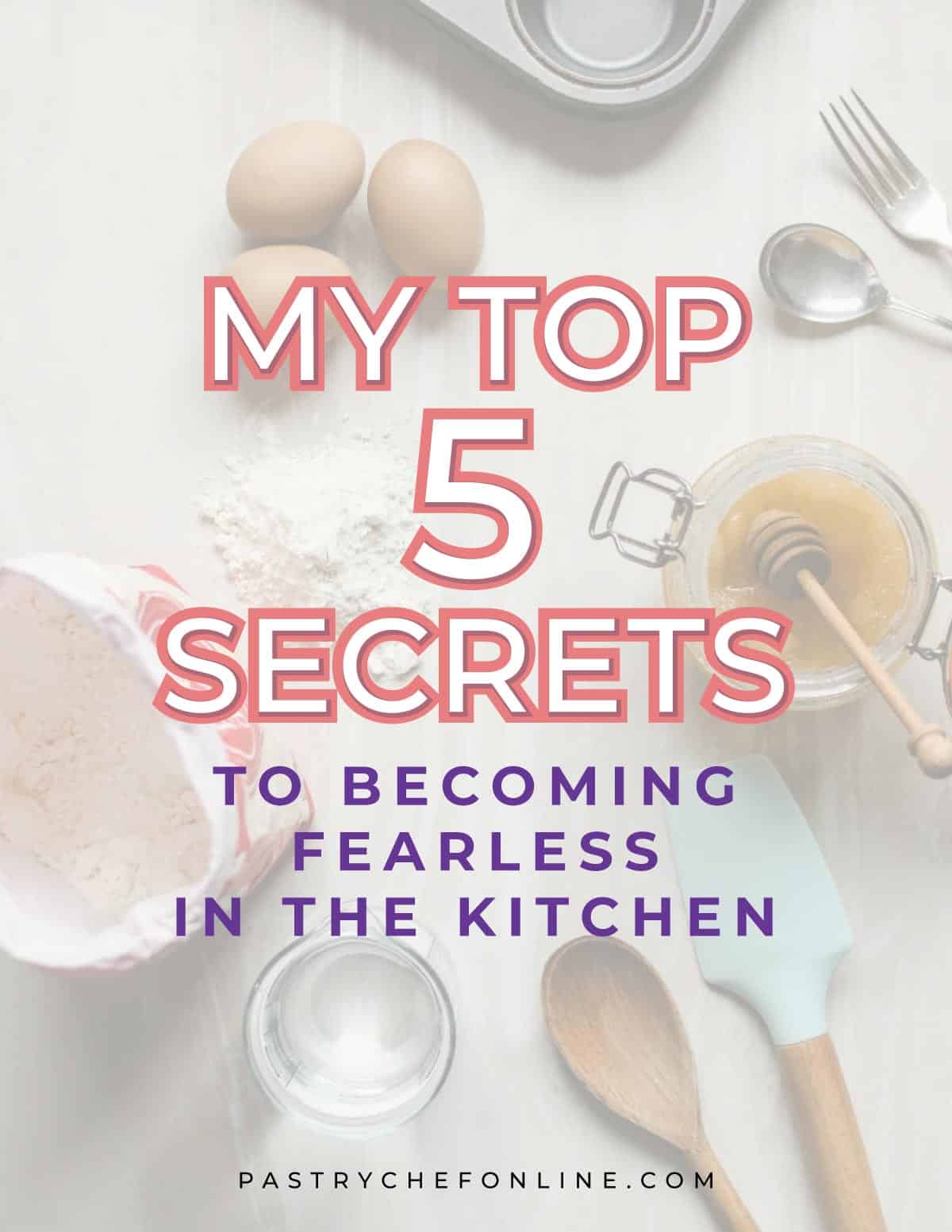
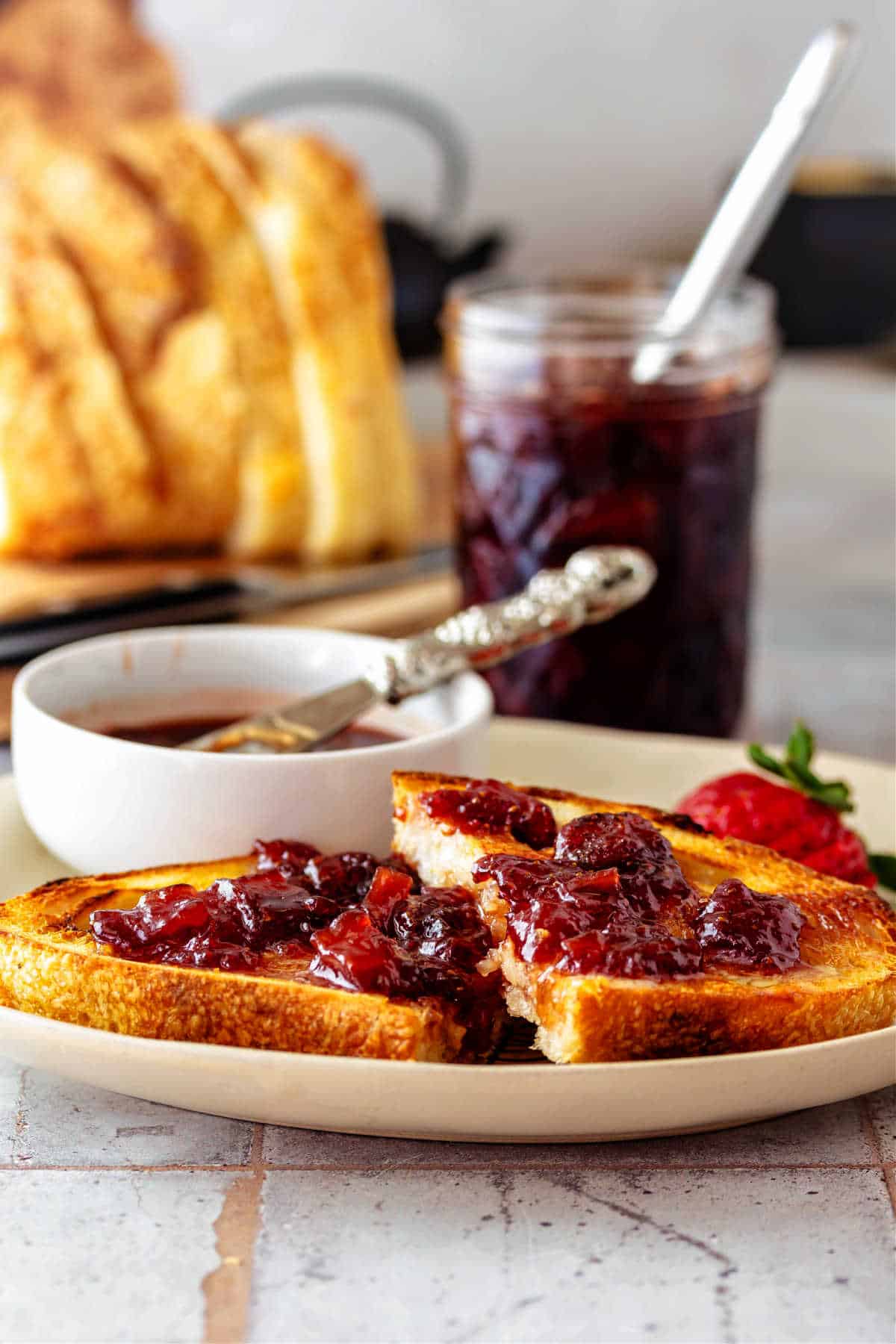
Join in Today!
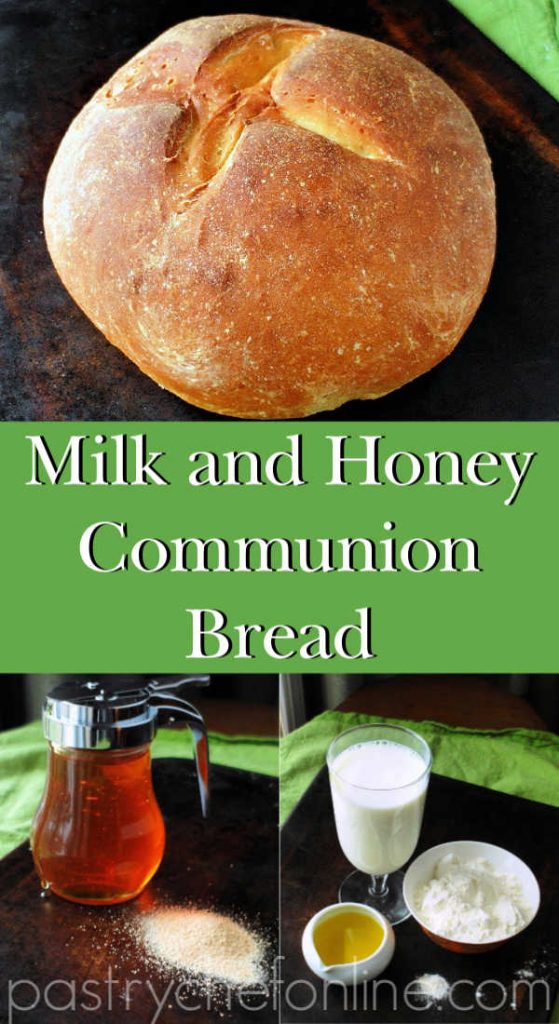
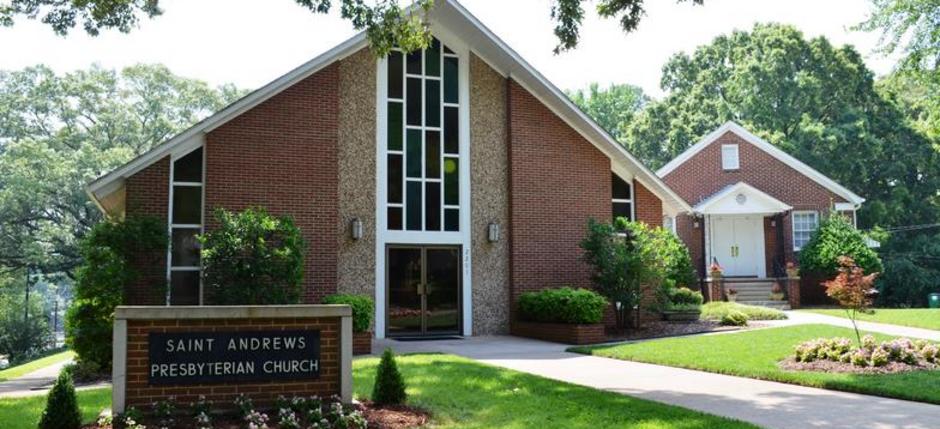
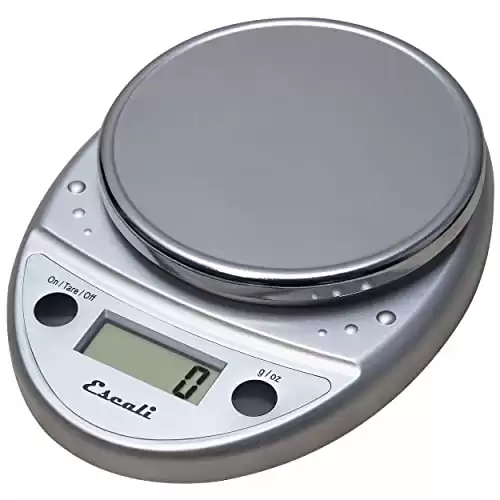
Looking forward to trying this recipe! After weighing the dough, if I only need to bake one loaf, what’s the best way to store the remaining dough? How long do I have before I need to bake the rest?
Hi, Jay. I would take the remaining dough and make 3-oz rolls or 4-oz burger buns with it. Once baked and cooled completely, they will freeze well for up to a couple of months and you can enjoy them whenever you’d like.